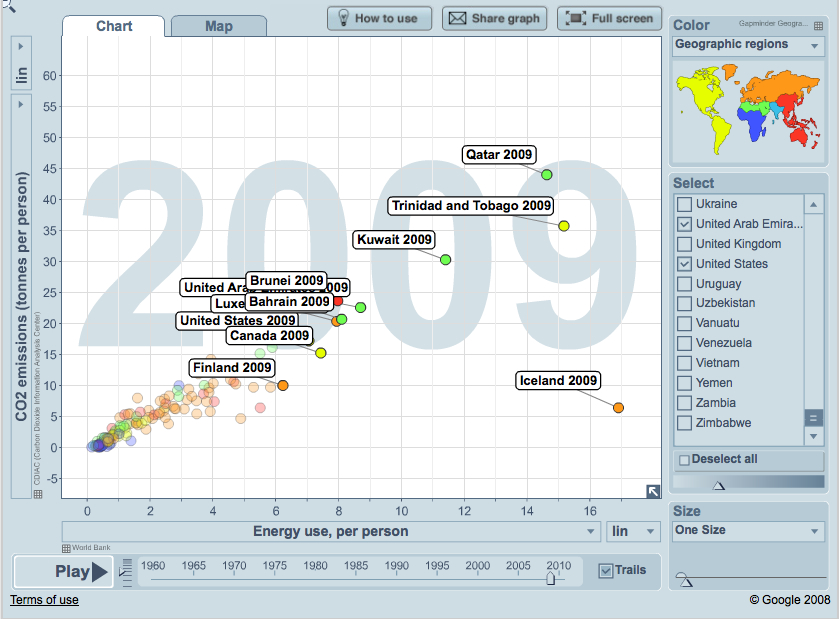Every week the American Society of Refrigeration, Heating, and Air Conditioning Engineers distributes an HVAC&R Industry newsletter via email, usually containing a smattering of energy-related news items, some relevant, some downright quirky. This week’s edition contained what on the surface appeared to be a real provocative item: “World’s Biggest Energy Hogs Are Surprising“. The real surprising bit: this piece was authored by OilPrice.com, an online oil and gas trade publication, not a the typically strident voices of the energy efficiency and environmental advocacy communities.
Beneath the surface was a relatively unsophisticated evaluation of global per capita energy consumption, with an eye toward “gluttony”, but no recognition of the metrics that truly matter to the planet, namely carbon pollution. OilPrice’s one-dimensional analysis appears below. The top culprit? Iceland! Shame on Iceland for its energy use per capita, almost triple that of the United States, despite the fact that it derives vast amounts of that energy from freely available, non-polluting, geothermal sources indigenous to the island.

OilPrice.com energy use per capita trends.
Of course, we know that energy is a two-sided equation of supply and demand. It’s easy for fossil fuel folks to shame the demand side, but both matter to the planet. Iceland’s per capita carbon emissions, for example, are well below any of the other countries on the glutton list, less than half of the U.S.
My recommendation: explore the data for yourself using Gapminder.org, which allows you to see how these values have evolved over time across the world. This link will take you to a good starting point, a view of per capita energy use alongside per capita carbon emissions by country. The results, at least this time, might not surprise you so much.

